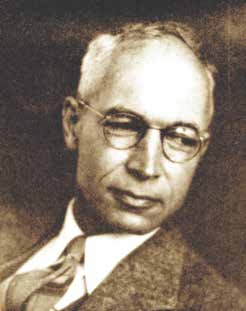 By Dr. Bill Lipsky
By Dr. Bill Lipsky
When Clarkson Crane published his first novel The Western Shore in 1925, it was notable for many reasons. It was the first book from a mainstream American press whose characters openly speculated about each other’s’ sexuality—their “tendencies in love”— and wondered whether or not they were “queer.” It presented its gay characters, not as stereotypes, but as individuals who came from different backgrounds, “a gallery of credible human beings.” None was a villain, corrupting the innocent around him. Nobody met a tragic ending.
Born in Chicago in 1894, Crane moved to California with his family in 1911. He graduated from UC Berkeley in 1916. After the United States entered the Great War the next year, he joined Section 586 of the U.S. Army Ambulance Corps, made up largely of UC students and recent alumni. For his bravery at Aisne and Champagne in 1918, the French Army awarded him the Croix de Guerre.

Crane returned to California after the war, wanting to be a writer, but found he could not support himself. In 1924, he returned to France. Living on a small stipend provided by an aunt, he settled into a humble hotel on the Left Bank in Paris. There, he took up the bohemian life of an expatriate, and drawing upon his experiences as a Berkeley student, completed The Western Shore, his first novel.
The book was remarkably frank for the period, asking, “Who is gay?” and, “How can you tell?” Probably the “fellow [who] had a squeaky voice, plucked his eyebrows, and always had his left palm against his hip.” Not the man who was “not effeminate. [His] voice was very soft, not at all squeaky; he rarely touched any one he knew; and frequently kept his eyes averted … Naw … ‘he’s not queer.’” Earlier novelists did not have questions. They simply presented risible or menacing stereotypes.
All of Crane’s novels are tinged with homoeroticism, although his most specific is The One and the Many. Written between 1948 and 1953, it tells the story of a young man’s journey of self-discovery in San Francisco between the world wars. Even then, Crane writes, “There were plenty of young homos drifting around town with whom I could have sex.” Whatever its literary merit—it was never published—the narrative is invaluable as a documentary of a time when same sex relationships were illegal and could lead to long prison terms.
The book is rich with information about how men thought about themselves. At the time, many believed homosexuality was a perversion or a mental illness, but Crane’s narrator is very comfortable with being gay, believing it is normal for him. “As far back as I could remember I had always been attracted to boys,” he says.
“Expert opinion” simply was wrong, his narrator says, but “two books gave much clearer understanding of my nature: Leaves of Grass and The Intermediate Sex” by Edward Carpenter. “The need for concealment was the only aspect of homosexual life that I disliked. Otherwise, I felt quite satisfied to be what I was, and I would not have wanted to change my nature, even if that had been possible.”
There were no bars, clubs or organizations then, but likeminded men still found each other. One popular “cruising site” was Golden Gate Park, during the 1920s inside the Stanyan Street entrance. Another was the beach near what was then Fleishhacker Pool, now the site of the San Francisco Zoo, where Crane met Clyde Evans, his partner of 47 years. A third was among the “bohemians” in the Montgomery Block Building. Now the site of the Transamerica Pyramid, it was for many years home to struggling artists and writers and almost certainly the seed that grew into San Francisco’s first LGBT community in North Beach.
 One of the gay-friendly places that came to North Beach, called Martino’s in The One and the Many, was a “speak-easy in which homos were allowed to gather, if they were not rowdy.” It was “above a grocery store on the second floor of a frame apartment house, and one was only supposed to be admitted if one had a card.” Possibly the club was modeled upon Finocchio’s when it was over a store at Sutter and Stockton streets.
One of the gay-friendly places that came to North Beach, called Martino’s in The One and the Many, was a “speak-easy in which homos were allowed to gather, if they were not rowdy.” It was “above a grocery store on the second floor of a frame apartment house, and one was only supposed to be admitted if one had a card.” Possibly the club was modeled upon Finocchio’s when it was over a store at Sutter and Stockton streets.
During the same era, the City saw its first “gays only” bath houses, where someone could have “a fabulous, but a perfectly fabulous time.” Crane’s model may have been the Club Turkish Baths, which opened at 132 Turk in 1930.
More than any single place, Crane explains that “nearly always I have found my long-time friends in unexpected and perfectly ordinary places, or even in social gatherings where I was introduced to them—rarely in special places where homos gather.” He was “always looking for someone who attracted me,” he confesses. Fortunately, “I had developed the homo’s all seeing eye.” Plus ça change, plus c’est la même chose.
Bill Lipsky, Ph.D., author of “Gay and Lesbian San Francisco” (2006), is a member of the Rainbow Honor Walk board of directors.
Recent Comments